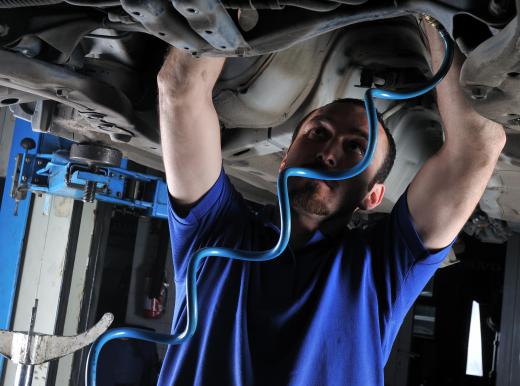A pneumatic cutter is a device found in a manufacturing facility that uses air power to cut objects to a specified size. There are many variations of the pneumatic cutter that are used to cut everything from wire to bolts. Typically, a worker will place the object to be cut into a jig and, once assured of the positioning, will step on a switch to activate the cutter. When the switch is activated, air enters the tool and initiates the cutting action as powerful steel jaws cut through and trim the item to size.
Some forms of the pneumatic cutter are not activated by a human worker, but are rather tripped by an infrared light. When the item to be cut enters a cutting area, the infrared eye sends a signal to the pneumatic cutter to cut the designated item. In manufacturing plants such as nail factories, this cutting action occurs millions of times per shift. As the raw nail blanks exit a die, a pneumatic cutter snips them off to the proper size, and they continue down the line to the next station.

In wire manufacturing, several passes through a pneumatic cutter may be necessary in order to complete a single wiring harness. Many times, the pneumatic cutter is accompanied by pneumatic crimpers, as the wire is not only cut to size, but is also fitted with a terminal end that is crimped in place. In this type of setting, wires are cut, stripped and spliced together in several steps which all utilize pneumatic equipment.
Safety is a must when working with pneumatic cutters. The cutters are very powerful, and it would be easy to lose or injure a finger should it get in the way of the cutting jaws. Typically, several safety features are in place to keep body parts free of the cutting area; however, in an attempt to work faster and meet or exceed any piece rate that may be in effect, some workers are tempted to modify the cutters to allow faster loading and unloading of work pieces. Operating the pneumatic cutter without safety shields in place is very dangerous and should never be attempted by anyone, anytime or anyplace.
Pneumatic cutters can work successfully on a wide range of materials. The strength of a pneumatic cutter is gauged by the amount of air pressure going to the tool. By simply adjusting the air pressure up, the tool is able to cut through heavy material with little resistance.
